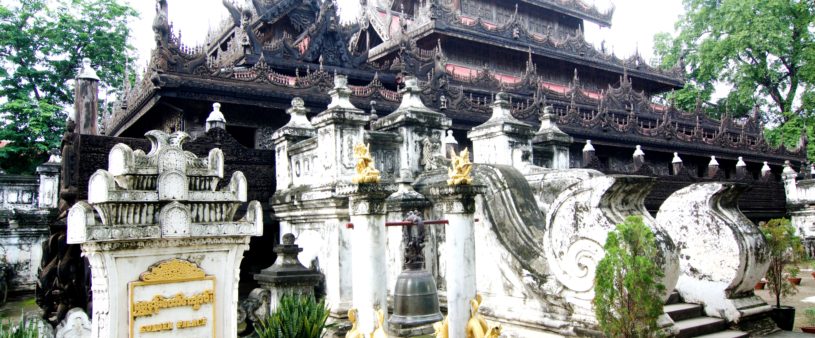The Shwenandaw Monastery, all teak monastery originally part of the Royal Palace is one of the finest examples of traditional 19th century wooden monastery building in the country.
The monastery was originally part of the Royal Palace in Amarapura, before it was moved to Mandalay, where it formed the northern section of the Hmannan (Glass Palace) and part of the king’s royal apartments. The building was heavily gilt with gold and adorned with glass mosaic work.
When the capital city was moved to Mandalay, the building was dismantled, transported to Mandalay and rebuild there as part of the new all teak Royal Palace in 1857.
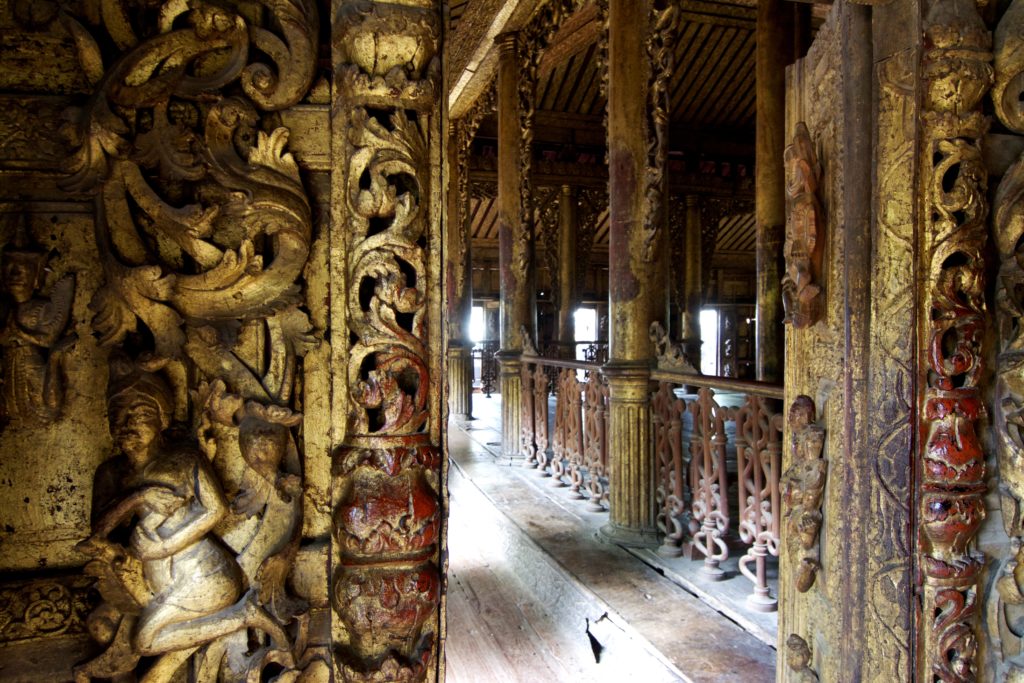
Mandalay, Burma (Myanmar)
Shwenandaw Monastery was built in 1878 by King Thibaw Min, who dismantled and relocated the apartment formerly occupied by his father, King Mindon Min, just before Mindon Min’s death, at a cost of 120,000 rupees.
Thibaw removed the building in 10 October 1878, believing it to be haunted by his father’s spirit. The building reconstruction was finished in 31 Oct 1878, dedicated in memory of his father, on a plot adjoining Atumashi Monastery. It is said that King Thibaw used it for meditation, and the meditation couch he sat on can still be seen.
The monastery is also called the Golden Palace Monastery, because it used to be part of the Mandalay Royal Palace and was completely gilded. Both exterior and interior of the monastery are decorated with intricate wood carvings. Some of the carved wooden panels ravaged by time and weather have been replaced with new panels, especially on the outside.

Mandalay, Burma (Myanmar)
Well known for it’s teak carvings of Buddhist myths, which adorn its walls and roofs. The monastery is built in the traditional Burmese architectural style. The roof lines are decorated with very detailed intricate wood carvings. The roofs bargeboards contain carved depictions of mythical creatures, animals, dancers and flowers.
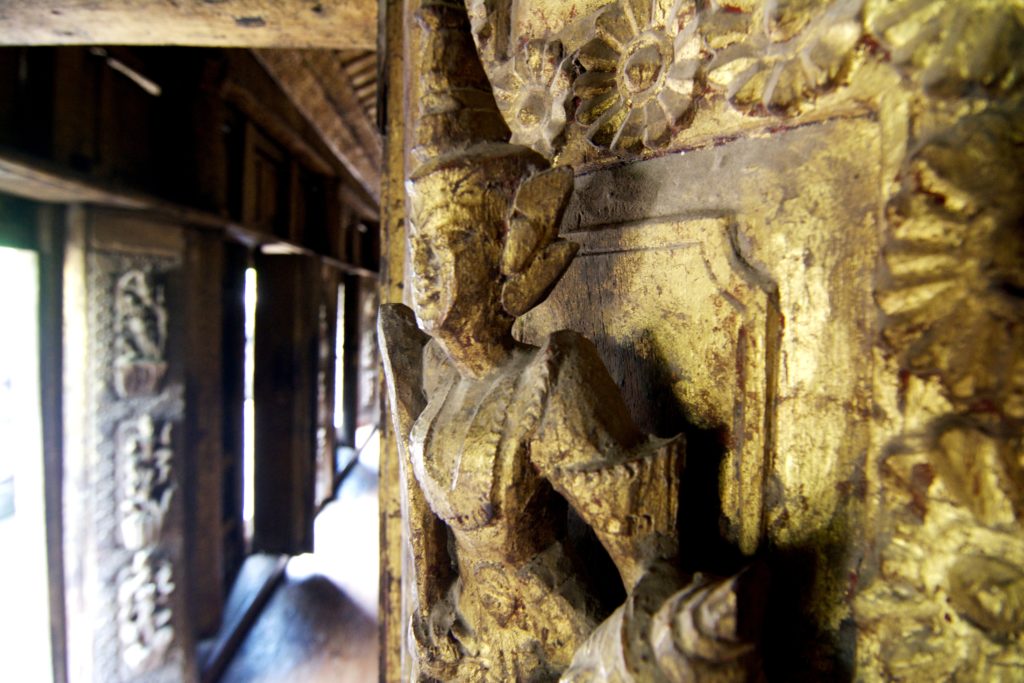
Mandalay, Burma (Myanmar)
Some of the best preserved panels are inside the building, sheltered from weather and sunlight. Among them is a number of carved panels depicting scenes from the Jataka tales, the tales about the previous lives of the Buddha.
Inside the main room in the center of the building is the main Buddha image, with Nat spirits worshipping it. Only men can go inside to worship the Buddha image.
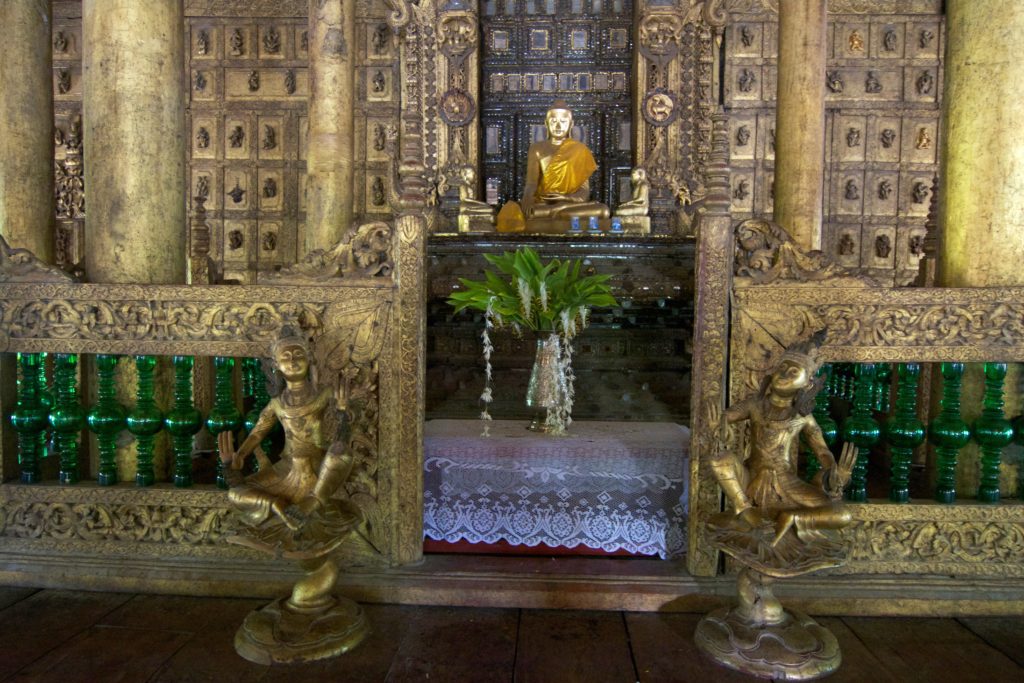
Mandalay, Burma (Myanmar)
The Shwenandaw Monastery is located a few hundred meters from the North East section of the Royal Palace grounds, next to the Atumashi pagoda. From downtown Mandalay you can get there by rickshaw which should cost around US$2 or by private taxi at around US$ 4.
Tourist can buy a Mandalay archeological zone ticket at US$ 10, that is valid for a week. This ticket is also valid for the Atumashi Pagoda located right next to it and for a number of sites around Mandalay in the towns of Sagaing, Innwa and Amarapura.
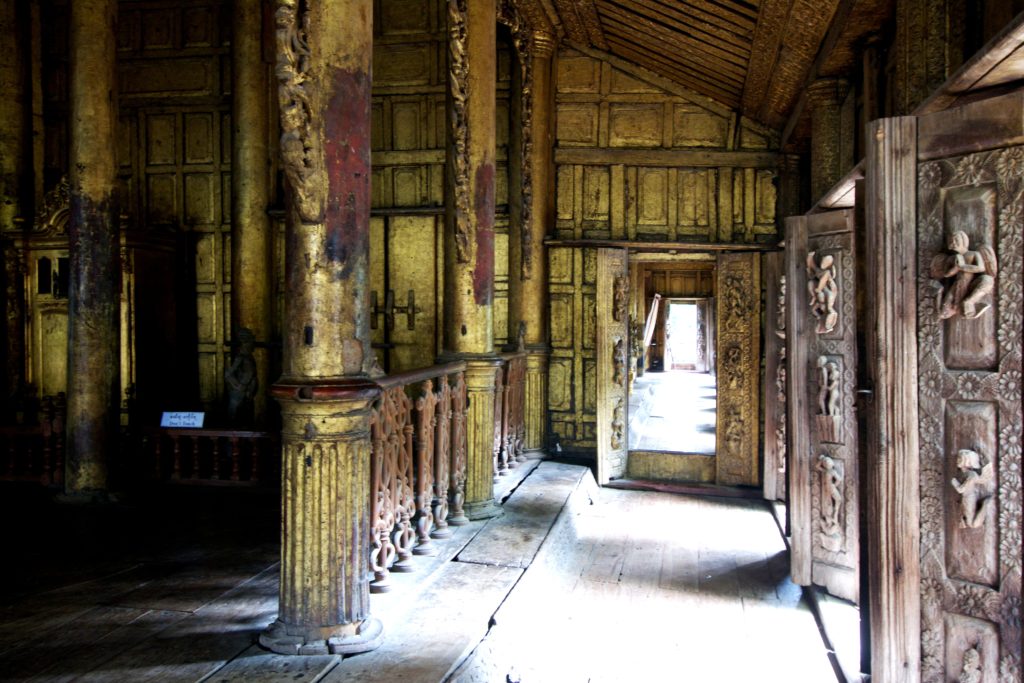
Mandalay, Burma (Myanmar)
This is a great place to get an impression of what the Royal Palace once must have looked like. As the Palace was destroyed by fire during the second World War, the Shwenandaw Monastery is the only major original teak wooden building left of the original Mandalay Royal Palace.
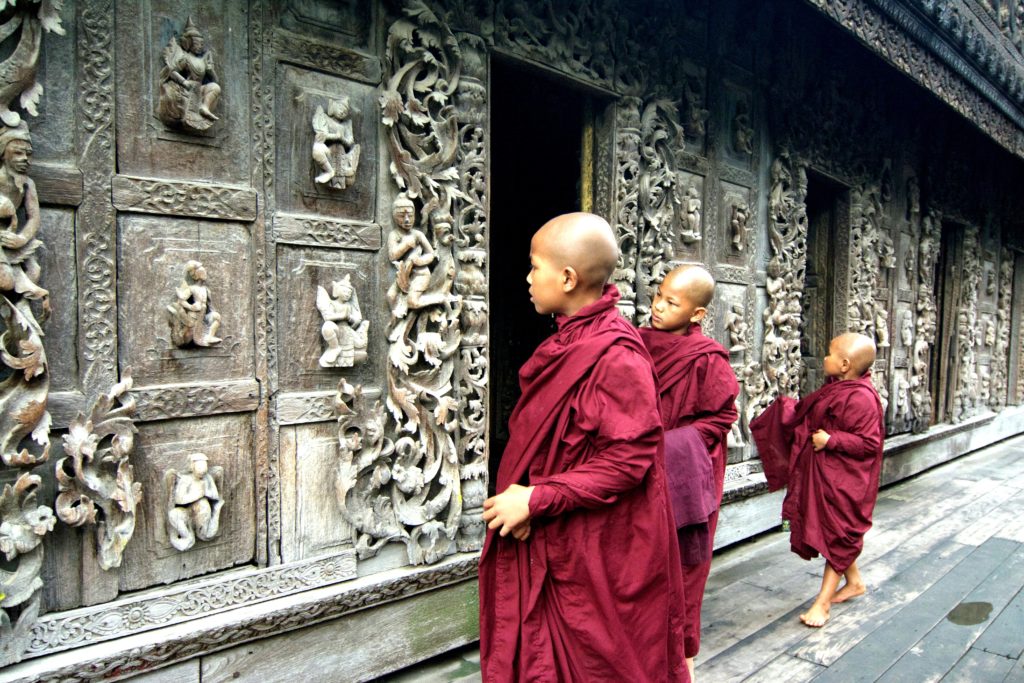
Mandalay, Burma (Myanmar)







